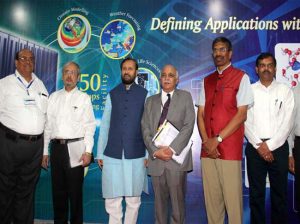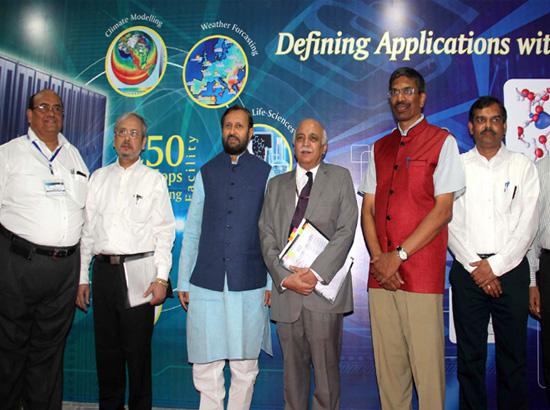IIT Guwahati unveiled one of India´s fastest and most powerful computer, PARAM-ISHAN. Union Human Resource Development Minister Prakash Javadekar launched the Param-Ishan supercomputing facility at IIT, Guwahati.
About PARAM-ISHAN :
PARAM-ISHAN has power of 250 Teraflops and three hundred tera bites capacity.
PARAM-ISHAN can be used in the application areas like
- Computational Chemistry,
- Computational Fluid Dynamics,
- Computational Electromagnetic,
- Civil Engineering Structures,
- Nana-block Self Assemble,
- Optimization.
It is a one of the fastest and most powerful computer in northeastern, eastern and southern regions. C-DAC and IIT Guwahati is a strategic move that will provide a boost to both the HPC users and the community through the deployed PARAM-ISHAN and several technology areas will be positively affected through the introduction of the new Supercomputer.
- Param Ishaan will have a speed of around 250 trillion floating point operations per second (tflops)and 300 TB storage.
- This will not only augment the research initiatives in the Institute, but also will help in creating an ecosystem for attracting right talents to the field of research.
North East India receives heavy rainfall during monsoon, which leads to flooding and landslides. PARAM-ISHAN can be used for Weather, climate modeling and seismic data processing
About Super computers :
A supercomputer is a computer with a high-level computational capacity compared to a general-purpose computer.
- Performance of a supercomputer is measured infloating-point operations per second (FLOPS) instead of million instructions per second (MIPS). As of 2015, there are supercomputers which can perform up to quadrillions of FLOPS.
- Supercomputers were introduced in the 1960s, made initially, and for decades primarily, by Seymour Cray at Control Data Corporation (CDC), Cray Research and subsequent companies bearing his name or monogram.
- While the supercomputers of the 1970s used only a few processors, in the 1990s, machines with thousands of processors began to appear and, by the end of the 20th century, massively parallel supercomputers with tens of thousands of off-the-shelf processors were the norm.
As of June 2016, the fastest supercomputers in the world are
- The Sunway TaihuLight, in mainland China,
- Tianhe-2 (MilkyWay-2), China
- Titan – Cray XK7, United States
India’s Super computers:
- SahasraT (SERC – Cray XC40, Indian Institute of Science
- Aaditya (iDataPlex DX360M4) Indian Institute of Tropical Meteorology
- TIFR – Cray XC30, Tata Institute of Fundamental Research
- HP Apollo 6000 Xl230/250, Indian Institute of Technology Delhi
- PARAM Yuva – II, Centre for Development of Advanced Computing





